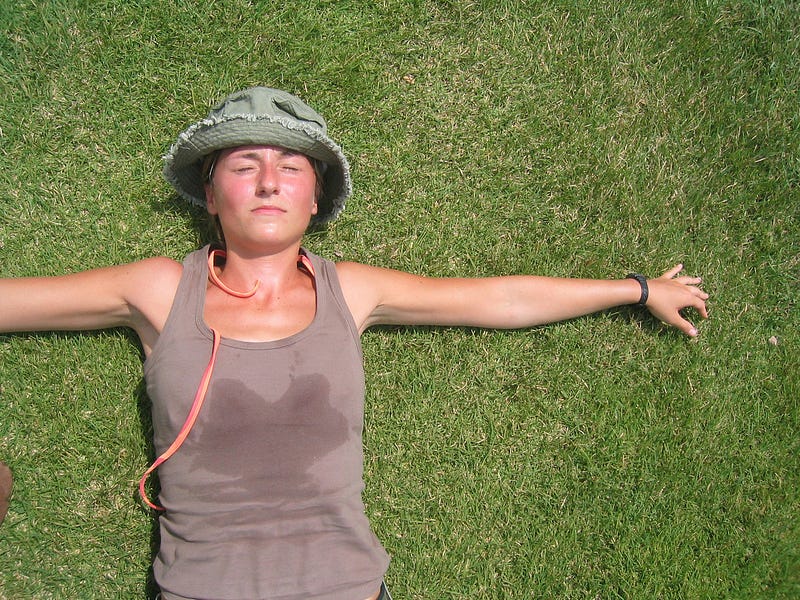How Heat Stroke Strikes
By Dhriti Aiylam, Behavioral Neuroscience 2023

Many of us love to play outdoor sports during the summer. But we hardly think of the dangers — or if we do, we underestimate them. Symptoms like headaches and cramping are often ignored, believed to be normal consequences of being in the heat too long. But these could be the warning signs of a dangerous illness: heat stroke.
Heat stroke is not a type of stroke, but a type of hyperthermia, a condition in which the body temperature rises to 105 degrees Fahrenheit or higher. Our bodies are normally good at regulating temperature. When our body temperature is too hot (due to any of several reasons, including the environment or our own metabolic processes), there are several mechanisms to cool it down — most importantly, sweating. But in extreme heat and humidity, the body may not be able to sweat, causing its temperature to rise to dangerous levels.
Heat stroke is not a type of stroke, but a type of hyperthermia, a condition in which the body temperature rises to 105 degrees Fahrenheit or higher.
The first symptoms of heat stroke are relatively benign, and therefore often overlooked. These include headache, nausea, vomiting, muscle and abdominal cramps, dizziness, fatigue, and either heavy sweat or a lack of sweat. It is imperative that during this heat exhaustion stage, a person takes steps to lower their body temperature, or the condition could exacerbate and become heat stroke. However, some people can develop more severe heat stroke symptoms immediately without exhibiting symptoms of heat exhaustion.
If heat stroke is allowed to progress, the victim can suffer neurological changes, which manifest in odd behavior, delusions, hallucinations, and seizures. This happens when proteins and membranes around the brain are destroyed and malfunction. These effects can reach deeper, too; heart muscle cells and blood vessels can break down, and organs can be damaged. For example, in extreme heat, rhabdomyolysis (muscle breakdown) can occur, and the by-products can appear in the bloodstream and damage the kidneys. Delaying treatment can lead to kidney and liver damage, congestive heart failure, coma, and even death.
If heat stroke is allowed to progress, the victim can suffer neurological changes, which manifest in odd behavior, delusions, hallucinations, and seizures.
Many factors increase the likelihood of heat stroke, including dehydration, heavy clothing, being overweight (which causes the body to generate more heat), sleep deprivation (which decreases the rate of sweating), having heat stroke in the past, and using certain medications or illicit drugs.
However, heat stroke is preventable. When the temperature is hot outside, you should remember to stay hydrated with water and sports drinks, wear loose clothing, take frequent breaks if active, and try to avoid being outside during the hottest hours of the day. If you recognize symptoms of heat stroke, you can take preventive measures to keep yourself and others safe in the heat.
